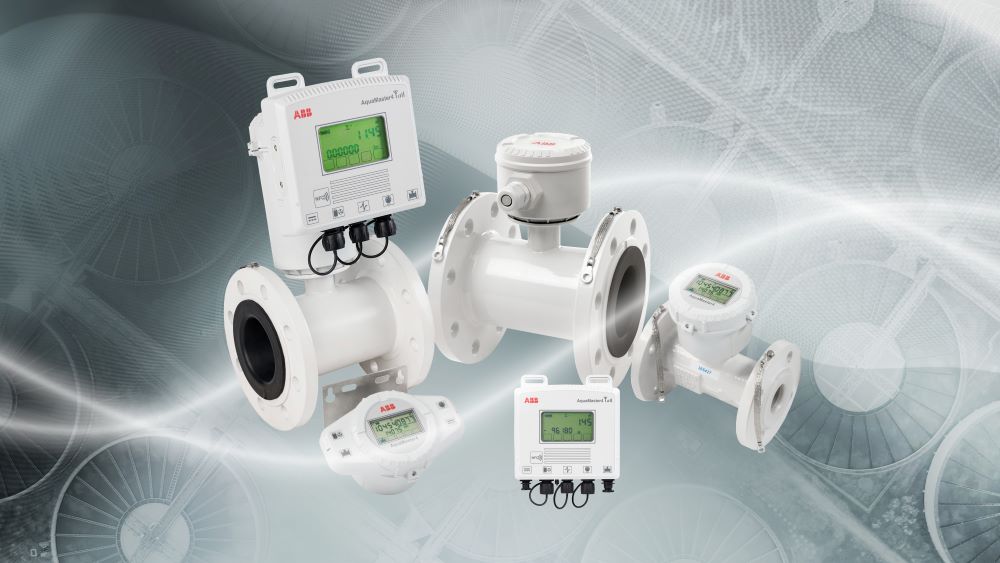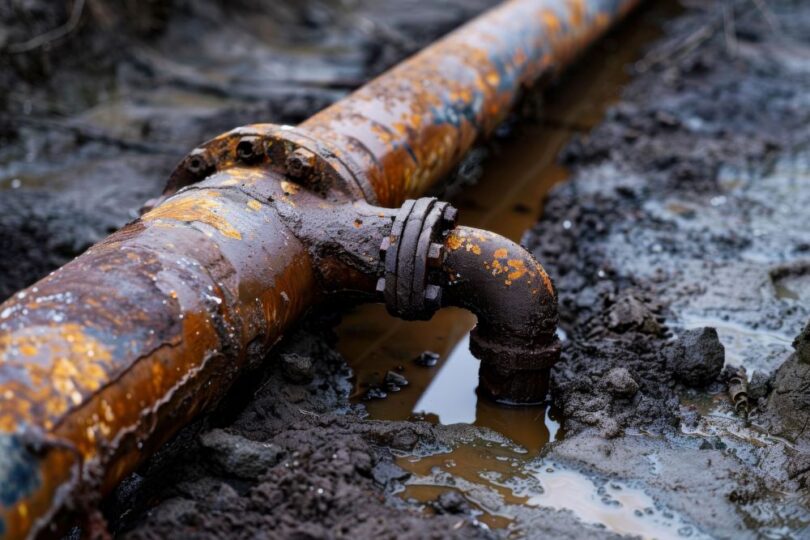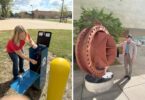Faced with challenges including a rising population, ageing pipe infrastructures and changing weather patterns the UK’s water utilities are under pressure to ensure the demand for water can continue to be met both today and into the future. Simon Hatch, Flow Product Manager for ABB Measurement & Analytics explains why measurement is key to managing the UK’s water supplies more sustainably.
Recent news that the UK’s water networks lost over 1tn litres of water in 2023 has once again drawn attention to the measures being taken to manage the nation’s water supplies. With the Environment Agency predicting that the UK will need five billion more litres of water a day by 2050[1] to meet the needs of a growing population, greater efforts need to be made today to better manage existing supplies to ensure they can meet both current and future demand.
The key to reducing leaks lies in understanding where they are occurring, how much is being lost, and which leaks need to be prioritised. The UK’s water networks comprise of over 400,000 miles of pipelines of varying ages and materials connecting over 50 million properties[2, which makes detecting leaks a difficult and ongoing task. Water loss through leakage is just one of several factors affecting the UK’s water supplies. The growing impact of climate change is causing unpredictable weather patterns, with climatologists predicting longer, drier summers in the UK[3].
Consequently, the nation’s water supply needs to be managed as sustainably as possible today and for future generations.

A wide range of factors are required to ensure a consistent and sustainable water supply. On the supply side, the primary consideration is to minimise water losses as far as is practical, including using modern measurement devices. Using data from these devices enables complementary supply management policies and procedures to be intelligently implemented and enforced which will reduce leakage and manage demand.
On the consumer side, customers are obliged to play their part by using water more efficiently and responsibly. Demand management measures can include regulatory limits, including pricing structures and incentives to encourage reductions in water use. Other measures can also include techniques such as water metering and educational initiatives to teach users about the importance of conserving water supplies and the measures available to help them do it.
Sustainable management of water starts with accurate measurement, with a range of measurements, from flow, pressure, and level through to water quality, playing a key role in ensuring the availability of freshwater supplies to as many people as possible. Once you have these measurements, the transmission of the data can been improved and simplified with Industrial Internet of Things (IIoT) technologies such as mobile communications to provide useful information.
The following are examples of how measurement and IIOT technologies are being used throughout water distribution systems to help provide the intelligence needed to manage water supplies.
System modelling
Optimizing system performance relies on precise measurement to gather accurate data for developing realistic models of the distribution system. Accurate modelling, combined with instrument data, allows simulation and optimization of critical parameters like pressure levels, flow patterns, and distribution parameters, ensuring reliable and sustainable water supply. The development of Artificial Intelligence (AI) is offering increased scope for using algorithms to analyse data from network instruments to both model and monitor conditions in real-time. When coupled with the added processing power of edge and cloud-based technologies, AI offers increased potential for enhanced decision-making and predictive maintenance by spotting abnormal pressure and flow conditions.
Pumping stations
Pumping accounts for a major percentage of a water utility’s energy costs so reducing energy wastage and prolonging equipment lifespan are critical. Measurement data, such as flow, pressure and vibration, can allow operators to assess pump efficiency, identify energy savings and minimise outages or maintenance activities. Sudden deviations from typical values can provide alerts for potential pump malfunctions, leaks, or system abnormalities. Detecting these issues early enables timely maintenance, decreasing downtime and reducing the risk of equipment damage. The data collected within pumping stations can also play a key role in system management and enhancement. By continuously tracking flow rates and pressure in real-time, operators can fine-tune pump speeds, improve valve control, and optimise system efficiency.

Leakage detection and control
The vast scale of water distribution networks means that wasteful leakage can occur anywhere. Although the size of a leaking hole may often be no larger than a pinhole, the extent of water losses through leakage can be considerable, particularly if undetected for prolonged periods. It is these types of loss, rather than the more easily identifiable, large-scale losses, which pose the biggest problem for water operators. Through measurement and continuous monitoring of flow rates and pressure fluctuations, unusual patterns that are suggestive of leaks can be pinpointed, enabling swift repairs to reduce water wastage.
District Metered Area (DMA) networks
More precise control and surveillance leak detection are facilitated with District Metered Area (DMA) networks that segment a water distribution system into smaller zones. Effective DMA schemes combine instruments such as flowmeters, pressure transducers, data loggers and Supervisory Control and Data Acquisition (SCADA), or telemetry systems to provide real-time monitoring and analysis. One of the challenges of DMAs is often their remote location, requiring the use of battery rather than mains-powered instruments, together with mobile communications to transmit data to the SCADA system. By comparing the water supplied to the DMA with the water consumed in the area, any disparities indicating potential leaks can be identified.
In addition, measuring pressure at strategic points within a DMA network aids in maintaining optimal pressure levels throughout. By monitoring pressure fluctuations and adjusting pump or valve operations accordingly, utilities can avoid excessive pressures that might lead to pipe bursts or leaks. Maintaining optimal pressure levels ensures efficient water distribution and minimises wastage. Further, measurements taken within a DMA network provide valuable data for evaluating overall performance of a distribution system. Utilities can identify areas in need of improvement and make well-informed decisions regarding network upgrades or modifications.

AquaMaster4 Mobile Comms
The intelligent way to a more sustainable water network
The intelligent approach to sustainable water management by water utilities can be achieved by integrating the latest technologies with unparalleled levels of performance and accuracy, and strategically deploying them across water distribution networks.
Equipped with the knowledge of what’s happening in their water networks, utilities can respond more effectively to demand fluctuations, mitigate losses due to leaks and inefficiencies, and optimise resource allocation. Moreover, the widespread adoption of such advanced technologies fosters a culture of innovation within the water industry, driving improvement and adaptation to evolving challenges such as population growth, climate change, and urbanisation.
References:
[1]. Source: The Guardian (2024) – Water firms in England and Wales lost more than 1tn litres from leaks last year
[2]. Source: AquaSwitch – The British water infrastructure
[3]. Source: BBC – UK summer 2024: How was it for you?








